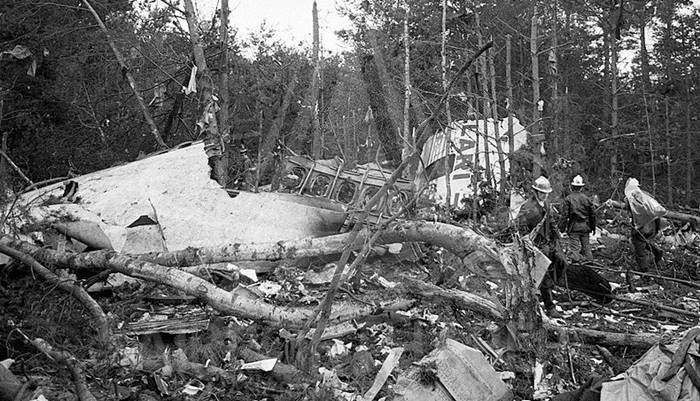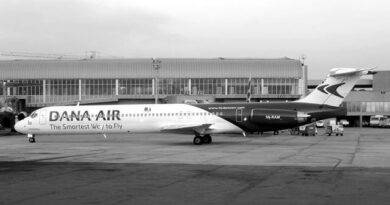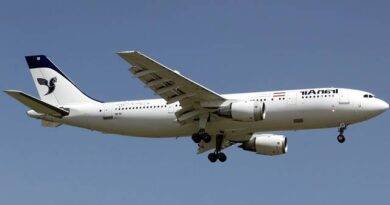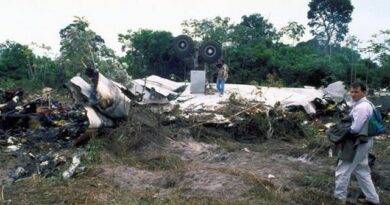Turkish Airlines Flight 981 and DC-10
In addition to the rapid development, the 1970s also witnessed two major accidents in the history of civil aviation. Increasing air traffic has always brought with it new restrictions. Technological advances were able to eliminate most of these problems, though. But when the job got out of machine control and depended on human attention, major accidents also became inevitable. One of these accidents undoubtedly occurred on Turkish Airlines flight 981.
Date March 3, 1974, located at Orly Airport, Paris, France. The first leg of the Istanbul-Paris-London flight of Turkish Airlines with flight number 981 was completed without any problems. The plane had landed at Orly Airport, Paris, where it was to drop off a group of passengers and continue on its way.
Strike by British European Airways Employees
But that was not the case that day. The plane was almost full due to a strike by British European Airways employees. Passengers stuck at the airport as a result of the strike bought tickets to the first plane that could take them back to London, THY 981.
While the plane was preparing for flight on the ground, Mouhammad Mahmoudi, an Algerian baggage officer, was working at the back of the plane. When Mahmoudi learned that there was no more baggage to come, he closed the cargo door of the plane. However, he closed the door with excessive force. Of course, he could not have known that the consequences would be fatal.
The plane was a 1-year-old Mcdonnell Douglas DC-10. Captain Nejat Berköz, co-pilot Oral Ulusman and flight engineer Erhan Özer were on the flight that day.
Turkish Airlines Flight 981
Turkish Airlines flight TK981 took off from Paris at around 12:30 noon. Shortly thereafter, the aircraft received clearance from the Air Traffic Controller to climb to 23,000 feet (6,900 meters). However, the Aircraft was just past 11,000 feet (3,300 meters) when an explosion sounded from the cabin.
Those moments were recorded in the cockpit sound recorder as follows.
- Captain Berköz : (calmly) What happened?
- Co-pilot Ulusman: (again calmly) The cabin exploded.
- Berkoz: Are you sure?
- Ulusman: Yes, I guess.
The cargo door of the plane exploded, creating a hole in the floor of the plane. The plane continued its straight flight for a while. However, the number 2 engine in the tail had failed. Then the passengers on the plane came forward in fear to avoid the hole in the back. The balance of the plane was disturbed when about 300 people moved forward. The plane began to descend and fall rapidly.
- Ulusman: Seven thousand feet!
- Ulusman: Hydraulics!
- Erhan Özer: We lost, it doesn’t work!
After a while, the plane started giving an overspeed warning. The DC-10 began to flight smootly with the effect of the speed, but they had lost too much altitude.The DC-10 went out of control and, despite the best efforts of the pilots, crashed into the forests of Ermenonville, 37 km northeast of Paris.

“We hit the ground” Ulusman said. These had been his last words. The plane crashed into the ground at a speed of about 800 km/h. There were a total of 346 people on board, of which 335 were passengers and 11 were crew members. There were no survivors in the accident.
About 2 years before this accident, an American Airlines plane in Windsor, USA, had a disaster for the same reason. At that time, American flight safety officials detected the problem in the cargo door of the DC-10 aircraft and reported it to the relevant units.
Flight 981 Through the Swiss Cheese Model: A Chain of Preventable Errors
Viewed through the lens of James Reason’s Swiss Cheese Model, the Turkish Airlines Flight 981 disaster was the tragic result of multiple latent failures aligning across different layers of defense. At the organizational level, McDonnell Douglas had known about the DC-10 cargo door’s design flaw since the American Airlines Flight 96 incident in 1972, yet failed to ensure that all aircraft were retrofitted with critical reinforcements and locking indicators. Regulatory oversight, particularly the FAA’s reliance on non-mandatory recommendations, allowed these known vulnerabilities to persist. At the human level, a baggage handler unfamiliar with the aircraft’s locking mechanism and unable to read the warning labels (which were not multilingual) unknowingly left the door improperly secured. Finally, at the technical level, the door’s design allowed it to appear latched even when it was not, and the cabin floor lacked sufficient structural reinforcement. Each of these holes in the safety layers aligned, resulting in catastrophic decompression, severed control cables, and ultimately, the loss of 346 lives.
Conclusion
The crash of Turkish Airlines Flight 981 remains one of the most devastating aviation disasters in history—one that tragically exposed the fatal consequences of overlooked design flaws, inadequate communication, and regulatory gaps. The accident not only claimed 346 lives but also served as a wake-up call for the aviation industry, prompting critical changes in aircraft design, maintenance protocols, and international safety standards. Today, the lessons learned from this tragedy continue to shape safer skies, reminding the world that in aviation, every detail matters—and every life counts.
You can reach the final report of that accident via the official report link.


